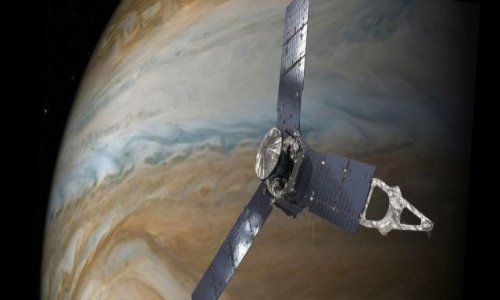

 6:10:46
6:10:46  2019-07-14
2019-07-14  814
814

Using NASA's Hubble Space Telescope, astronomers have discovered a disc very close to a starving black hole - something that should not be there - based on current astronomical theories.
The unexpected thin disc of material was found encircling a supermassive black hole at the heart of the spiral galaxy NGC 3147, located 130 million light-years away, according to a study published in the journal Monthly Notices of the Royal Astronomical Society.
The presence of the black hole disc in such a low-luminosity active galaxy has astronomers surprised.
Black holes in certain types of galaxies such as NGC 3147 are considered to be starving as there is insufficient gravitationally captured material to feed them regularly.
It is therefore puzzling that there is a thin disc encircling a starving black hole that mimics the much larger discs found in extremely active galaxies, the study said.
The disc's material was measured by Hubble to be whirling around the black hole at more than 10 percent of the speed of light.
At such extreme velocities, the gas appears to brighten as it travels toward Earth on one side, and dims as it speeds away from our planet on the other. This effect is known as relativistic beaming.
Hubble's observations also show that the gas is embedded so deep in a gravitational well that light is struggling to escape, and therefore appears stretched to redder wavelengths. The black hole's mass is around 250 million times that of the Sun.
"This is an intriguing peek at a disc very close to a black hole, so close that the velocities and the intensity of the gravitational pull are affecting how we see the photons of light," explained the study's first author Stefano Bianchi of Roma Tre University in Italy.
Of particular interest, this disc of material circling the black hole offers researchers a unique opportunity to test Albert Einstein's theories of relativity.
"We've never seen the effects of both general and special relativity in visible light with this much clarity," said Marco Chiaberge of the European Space Agency, and the Space Telescope Science Institute and Johns Hopkins University, both in Baltimore, Maryland.
Reality Of Islam |
|

Astronomers

Researchers

The theory

Don't l
 9:3:43
9:3:43
 2018-11-05
2018-11-05
10 benefits of Marriage in Islam
 7:5:22
7:5:22
 2019-04-08
2019-04-08
benefits of reciting surat yunus, hud &
 9:45:7
9:45:7
 2018-12-24
2018-12-24
advantages & disadvantages of divorce
 11:35:12
11:35:12
 2018-06-10
2018-06-10
 6:0:51
6:0:51
 2018-10-16
2018-10-16
 8:30:23
8:30:23
 2022-03-03
2022-03-03
 1:34:8
1:34:8
 2022-02-01
2022-02-01
 2:5:14
2:5:14
 2023-01-28
2023-01-28
 4:26:43
4:26:43
 2022-02-21
2022-02-21
 2:11:12
2:11:12
 2022-10-15
2022-10-15
allah will not answer all your prayers
 6:56:28
6:56:28
 2022-01-01
2022-01-01
 1:16:44
1:16:44
 2018-05-14
2018-05-14
 5:41:46
5:41:46
 2023-03-18
2023-03-18
| LATEST |